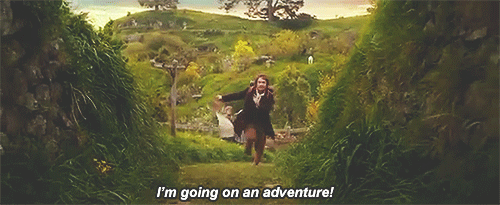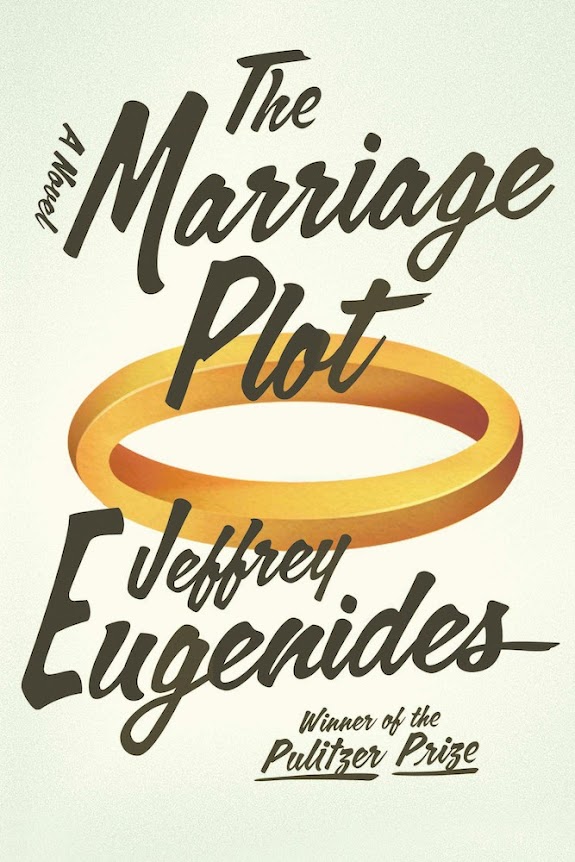This is fascinating in a refreshingly absurd way: Old People Wearing Vegetation.
Created by Riittai Konen and Karoline Hjorth.
(via bb)
This is fascinating in a refreshingly absurd way: Old People Wearing Vegetation.
Created by Riittai Konen and Karoline Hjorth.
(via bb)
Please Pay fine art lithograph, by Brian Garner. The image came from a stamp he found at a thrift shop in College Park, Maryland.
(I really want that stamp. You can buy it here.)
The New York Times built a Haiku Bot. I kid you not. I can’t stop smiling. Times Haiku are generated from stories on the homepage of NYTimes.com. Simply wonderful.
Read more about this over on Niemanlab.org.
My return was sweet, my home refound, but my thoughts were filled only with grief at having lost her, and my eyes gazed at the moon, forever beyond my reach, as I sought her. And I saw her. She was there where I had left her, lying on a beach directly over our heads, and she said nothing. She was the color of the Moon; she held the harp at her side and moved one hand now and then in slow arpeggios. I could distinguish the shape of her bosom, her arms, her thighs, just as I remembered them now, just as now, when the moon has become that flat, remote circle, I still look for her as soon as the first sliver appears in the sky, and the more it waxes, the more clearly I imagine I can see her, her or something of her, but only her, in a hundred, a thousand different vistas, she who makes the Moon the Moon and, whenever she is full, sets the dogs to howling all night long, and me with them.


And Tilda Swinton dressed as David Bowie. No biggie.
[by Jeff Cronenweth]

Of the visitors to Cecil Beaton‘s bathroom. The famous photographer and Academy Award winning costume designer would trace the hand of each guest, ask them to initial it and then paint over it. No biggie.
[Found via The Peak of Chic]


Of the many strengths of the human mind, gauging the passage of time just isn’t one of them. Sure, we do well enough sometimes with minutes and hours, but things seem to get progressively sketchier when we scale up to weeks, then months, then years. It isn’t a coincidence that every time New Year’s rolls around, we experience a collective sense of wonder——my god, another one, already? I’ve come to think we’re just wired with this deficiency, an adaptation of sorts, because if we realized how swiftly everything truly goes by, we’d feel so hopeless.
So, I know people always preface with this kind of thing, but I can’t believe it’s been a year since we went out for a walk with one dog and, long story short, came home with two. I mean, when I really think back——about the weeks of trying to figure out where he’d live, of finding him a foster home, of eventually deciding he could just stay with us, and then of the subsequent weeks of potty training and trying to get him to eat decent food, and now the months of forgetting what it was like not to have him around——I guess I can believe it’s been a year. But it still sounds like such an awfully long time.
When we first found Linus, the vet thought he was between 9 and 11, so we went with 10. So I guess now he’s between 10 and 12? So we’ll go with 11? Happy birthday, Linus. You’re old. Or as the vet put it recently when discussing an upcoming blood test, “geriatric.”
I don’t say “old” as a derogatory term. I love old things. I love old houses, and old furniture, and I especially love old people. And as it turns out, I love old dogs, too. Linus’s past is full of mystery and intrigue, a whole universe of stories we’ll never get to the bottom of. In a way, that’s frustrating——the not knowing——but it’s also kind of romantic. While I know he’d been horribly, inhumanely neglected when he came to us, I don’t like to think that his whole life was spent that way. I prefer to believe that was just some weird pit-stop he made in the land of Bad Luck, that maybe fortunes changed and he fell on some hard times and decided to pack up his knapsack and hit the road in search of greener pastures. And when he finally found them, he was all perfectly weathered, world-weary and ready to settle down.
I think it takes a certain type of person to decide to adopt an old dog, and I won’t pretend I’m one of those people. It means knowingly missing out on stinky puppy breath (which is my favorite smell in the whole world), and silly doggy adolescence. It means never seeing a full set of teeth, or watching your energetic puppy calm down into some version of itself that’s calmer, more dignified, and wiser, somehow. And, the unpleasant truth of the matter, is that it means you just might not have your dog for very long, which is a particular point that nobody seems altogether comfortable talking or thinking about. But I’m not really one of those sunny people who walks around ignoring stuff like that. And despite my deepest admiration and respect for people who make the choice to adopt old dogs, I can’t really imagine signing up for it. The way we saw it was that we didn’t really have a choice——he fumbled his way into our lives, and we either had to accept that graciously or risk that nobody else would decide to love him, ever. And that just wouldn’t do.
Who knows how long Linus will live——maybe he’ll be one of those wonder dogs who lives until he’s 25, or maybe he’ll be a normal dog who lives until he’s 13 or 14. Either way is OK. That’s always been one of those unspoken understandings between Mister Linus and I. I’ll take care of you as long as you stick around, little guy, and all you have to do is love me. That’s your only job. I won’t try to put you through the mental hurdles of sit or stay or learning your name. You’ll have everything you need, and you just have to hold up your end of the bargain.
Max’s mom, Sue, once commented offhandedly that all Linus really wants is a warm body to cuddle up to. In some senses, I think that’s basically true. Linus likes everybody and everything, and nearly anyone who sits still for more than a few minutes on our sofa will find a dog sprawling peacefully across their lap. But I think Linus and I have a special thing between us—a type of love that I can’t really convey to most people, or even expect other dog owners to understand. When I was little, I read Philip Pullman’s The Golden Compass because I liked the cover when I saw it at Borders. I don’t recall enjoying the book, but one of the ideas in it really appealed to me——that everybody got a little spirit animal called a dæmon, a dedicated creature metaphysically attached to them through, like, magic n’ stuff. And that’s how I feel about Linus. Mekko is my beautiful, perfect baby——my lovable problem child——but Linus? He’s my dæmon.
People often think it’s weird that we have Linus and Mekko, a high-spirited Pit Bull, in the same house. I do, too. Mekko is the dog I always wanted——beyond intelligent, sharply focused, energetic, overly friendly, and as neurotic as her dads (which is to say, extraordinarily neurotic). Mekko is the sort of dog who could probably learn all sorts of exceptional things if we put her up to them, like sign language and math and how to rescue babies from burning buildings. She’s the type who wants to get where she’s going, who’s always looking ahead for the next challenge or exciting thing. People say dogs live in the present and don’t think consciously about the past or future, but I don’t think that’s really true. Mekko probably doesn’t think about what her life will look like when she’s 30, but I know she’s always thinking about somewhere just a little ahead of the present, just beyond it enough that we don’t know what it looks like yet.
But Linus lives thoroughly in the moment. He moves quickly when he feels excited, but most of the time he moves at a pace not much faster than a crawl. Fresh flowers, discarded food scraps on the sidewalk, the fragrant aroma of someone else’s pee——these are all things Linus feels obligated to stop and appreciate fully, with every ounce of his attention. He greets each discovery anew, as if it’s the most fascinating and enticing thing he’s ever encountered. Absent any schedule to keep or goals to fulfill, Linus is left only with what’s in front of him, here and now. He’s the one that literally makes us slow down, take long pauses, and remember that maybe everything doesn’t have to happen so fast. Maybe time will just wait for us a little longer than we thought it could. Maybe we have all the time we need.

Beyonce, Jay-Z, and Blue Ivy “Miniature Jay-Z” Carter are in France for the Mrs. Carter world tour this week, where they continue to disappoint in the fashion department. Miniature Jay-Z is wearing jeans and a t-shirt, which I am pretty sure is a felony in Paris.
If it’s not, it should be.
At first I’m all:

But I always end up like:

Vanda Noronhaoh god

 Author Maureen Johnson kept hearing from male readers asking for less "girly" covers on her books, so that they could read them in public. She, too, had been frustrated by how books written by women so often got cheesy covers that made them seem less literary and of lower quality. So, she issued a challenge on Twitter: She asked people to choose a well-known book and imagine that the author was of the opposite gender. "There were hundreds of replies within 24 hours," she said. Take a look...Read More >
Author Maureen Johnson kept hearing from male readers asking for less "girly" covers on her books, so that they could read them in public. She, too, had been frustrated by how books written by women so often got cheesy covers that made them seem less literary and of lower quality. So, she issued a challenge on Twitter: She asked people to choose a well-known book and imagine that the author was of the opposite gender. "There were hundreds of replies within 24 hours," she said. Take a look...Read More >Vanda NoronhaGiovanna <3

For the most part, the famous and fashiony folk who showed up last night at the Metropolitan Museum’s of Art’s gala for the new Punk: Chaos to Couture show elected not to try and dress to fit the evening’s theme. Or if they did, it was ever so blandly: a spike necklace here, some dramatic eyebrows there. Still, there were moments that amused. Like Italian editor Giovanna Battaglia’s safety pin `do.

And Jenna Lyons, who came as a walking Clash lyric.

Also: Debbie Harry, who showed the kids how it’s done.

And Madonna, who got an A for effort. Check out how everyone else looked at The Cut, Us, People, Vogue, Daily Mail, and Huffington Post.

FINALLY! Bic figured out that women can’t use something unless it’s in a pastel color and says FOR WOMEN on it, so they decided to make lilac, coral, pink, and aqua-colored ballpoint pens. Across the world, billions of women stood up and cheered. Now, after all these years, they would finally be able to use a pen.

Let me stun you by telling you that the author of this already visibly-horrifying book has included a special section on how to cheat a Thai prostitute out of her payment. He doesn’t just want to go to Thailand and pay for sex. He wants to steal sex from the prostitutes.
It’s like a turd shit out a tiny, horrible, even stinkier turd, and then that turd got a boner, and then wrote a book.


As Charlie Chaplin and Groucho Marx. Photographed by Irving Penn. No biggie.
The brutalist hulking forms that come from building with concrete.
I don't know why but I always think of concrete as being a modern building material ( I think in my head it's inevitably linked with high rises) but concrete is an ancient building material. It was used as early as 800bc!
Concrete technology was known by the Ancient Romans and was widely used within the Roman Empire—the Colosseum is largely built of concrete.After the Empire passed, use of concrete became scarce until the technology was re-pioneered in the mid-18th century.
Today more than half of the world's population live in cities, where lack of money, lack of imagination and lack of space have seen many of them turn into concrete jungles. Urban landscapes filled with great grey lumps instead of buildings of beauty and craft.
But as with so many things beauty is in the eye of the beholder and all it takes is imagination and a clever mind to make you look at things anew.
That's exactly why I love the works of Evol, a Berlin based street artist so much.
Evol uses stencils to shape electric boxes and other public objects to create cities in miniature. Multi-level housing complete with satellite dishes, closed curtains, balconies and window sills. No detail is too small to escape his attention. His diverse set of stencils add variety and movement to his vertical surfaces whether it is opening a window, or adding a satellite or flower pots to a window sill, all help to make each one unique. Just like our own homes.
He uses anything that resembles the scale and proportions of architectural elements to begin defining the next micro-city. His technique is composed of carefully studying the object, the current state of the material and then working with it to create his multi- level composition.
The texture of the objects allows him to create buildings that seem to have been there for decades, showing their wear and tear sometimes created by weather, salt, oxidation and time...
all photos © Evol

The neighbors wondered whether a motel might be going up during construction. In the Chicago suburb of Highland Park—composed mostly of large, traditional houses—they weren’t used to seeing anything like it in 1963. Single-storied, flat-roofed, vaguely linear, and covered primarily in bright white stucco, it didn’t look like much from the outside. At best, they probably thought, it was uninteresting—a tacky architectural carry-over of California modernism. At worst, it was offensive. There were certain codes of conduct in places like this, and judging from the architecture alone, rule #1 was to color inside the lines.
My grandparents weren’t the original owners of the house, but I never really saw it that way. They were more like adoptive parents: maybe they didn’t build it, but they were the ones who treated it the way it was supposed to be treated. They hired a decorator when they moved in in 1972, and together they conceived and executed a plan, resulting in something not unlike what would happen if Woody Allen’s Sleeper mated with 2001: A Space Odyssey and birthed an entire house.

But that wasn’t how I saw it, either, at least not until I was older. I didn’t see it as mid-century modern or 70s glam, and I certainly couldn’t appreciate the curvilinear design scheme that gave the house shape or the particular balance of materials that gave it form. It didn’t strike me as odd that my grandparents owned a sofa made entirely of foam, or that the rug was made of strands of yarn longer than my hands, or that the coffee table essentially amounted to an enormous plastic cube. It was all just part of them.
My grandparents were both people for whom modernism wasn’t any kind of intentional decision or contrived style choice, but just something they kind of emitted and diffused into the air around them. Like Steve Jobs, my grandfather always seemed to be wearing some slight variation of the same understated uniform. He accessorized with slim plastic watches that looked like they’d been flattened by a steamroller. He was a constant consumer of information and news: if there was a new technology, he wanted to know about it. His whole ensemble—the house, the look, the attitude–added up to being the sort of person who embraced the future with open arms.
They fit, together. For as long as I can remember, my grandma stuck to a basic wardrobe of black and white. But there was always a twist: a line of decorative buttons there, a pair of glasses so elaborate and substantial that it was hard to imagine the bridge of her nose supporting the weight. She always carried with her a set of Paper Mate Flair felt-tip pens, a packet of tissues, and little pill-sized tablets of Equal sugar substitute in a plastic dispenser. She was the kind of person who thought everybody she encountered was entirely fascinating, who could listen to a person talk about nearly anything, and do so with utterly rapt attention. Everything was “nifty” to her, and if it wasn’t, you felt as though it was. Profoundly so.

And there they were, in that wild 60s house—colored by vivid 70s technicolor—floating around it all like little punctuation marks. They were a part of that house and it was a part of them. And I thought it was the most beautiful place I could imagine.
My grandfather died in 2001, and everybody more or less figured that my grandma would move out of the house in favor of something more manageable and suited to a woman approaching her 80s. But she refused. I found out a couple of years ago that my grandma never actually liked the house—that it had always been my grandfather’s passion and that she had complained about it constantly. But his death brought about a sort of desperate clinging, the despair of leaving it worse than the despair of living in it alone. This went on until she, too, passed away in 2007.
I went back to the house twice after my grandma passed away—the first time, to sit shiva, and the second time, about a year later on a trip to Chicago. To a stranger, it probably would have looked the same. But it felt different. Where before the air always held a slight tinge of her perfume, now it was flat and vacant. The house was still an amazing place by all counts, but something essential about it had dissipated, leaving only a spectacular shell in its place.

Though it would now be regarded more as pathology than habit, my grandmother was a perennial keeper of things: old receipts, letters, coupons, photographs, and other documents. She had a cataloguing system all her own, enabled mainly by binder clips and paperclips, and stashes hidden all over the house. What began as a daunting but straightforward process (“we’ll rent a dumpster…”) turned into an ordeal that took weeks, then months, then years. As middle children often do, my aunt Janis took on nearly all of this work, separating the trash from the treasure, sitting alone in the middle of the living room with mounds of paper building up around her, a pile for everybody. I wonder if she ever considered carrying it all out the back door, walking a rickety stairway down to the beach on Lake Michigan, and just setting it all ablaze. But she couldn’t do that. Instead, she spent nights and weekends, early mornings and late afternoons commuting between downtown Chicago and her parents’ old suburb to take care of things for the rest of us. For Janis, the house became both a thorn in her side and—if not the final—than at least the largest tether connecting her to the past. Anybody who has ever taken detailed stock of somebody else’s belongings knows the feeling: it isn’t just sorting. It’s communing. And when it’s over, there’s a deep feeling of emptiness and finality. There’s no more to be seen or found, and it’s time to move on.
Everybody wanted to keep the house. Janis and her husband, Tom, considered moving in briefly, and my parents even toyed with the idea of relocating from Washington, D.C. to live in it, but it just wasn’t practical for anybody. Once it was finally listed, the large lot on the lake immediately attracted the attention of developers rather than families, who saw in the house only an easy tear-down and the potential for three houses in its place. And that wouldn’t do.
So we waited. For two years, the family refused enticing development offers, hoping that the right buyer would happen upon it and see what the rest of us saw. But it didn’t happen, and I don’t think I’ll ever forget the sinking feeling in my stomach when I found out that we—the estate—had accepted an offer from a developer. The carrying costs and the maintenance had become overwhelming, and we’d all just lost hope. We negotiated salvage rights, giving us the opportunity to bring in a crew of contractors and remove anything we could—lighting, built-ins, even the doorknobs were coming with us. Admittedly, the idea that pieces of the house could be dispersed and reused across the country was a decent silver lining, but it didn’t help much. The idea of a bulldozer destroying the house all at once was only slightly less palatable than us going to rip it apart from the inside out.
But then something fell through, as they often do when real estate is concerned, and the developers backed out. Amazingly, it wasn’t long after until the right buyers did come along, and saw the house as something special and worthwhile and significant, and offered to buy it. And then it was time to really say goodbye.
Most of the furniture, art, and other stuff got loaded on trucks and sent around the country—to my aunt, just an hour away in Hyde Park, Chicago, to my uncle in Utah, to my parents in D.C. and to my sister in Los Angeles. And we got a few things, too.

This chair was one of a pair that sat in my grandparents’ bedroom for almost 40 years (my dad has the other one), and now it’s mine. Of course, I know what it is and what it’s worth, but that’s really not something I think about. I love it because it belonged to them, and because I grew up climbing all over it, and because sitting in this chair feels different than sitting in any other chair exactly like it.

Not surprisingly, it’s also very comfortable and has basically become my permanent office in the apartment.

The other biggest thing that came our way on a truck were these two lithographs that used to hang on the wall behind my grandparents’ bed. They’re really sun-damaged and worth very little, but they’re two of my favorite things. I love them hanging over the bed like that, and every time I peak into the bedroom I’m so happy that they ended up with me.

My grandparents didn’t live to see me become an adult or the sort of life I’m building, or the ones who get to share these things with me. But I think they’d be happy, too.